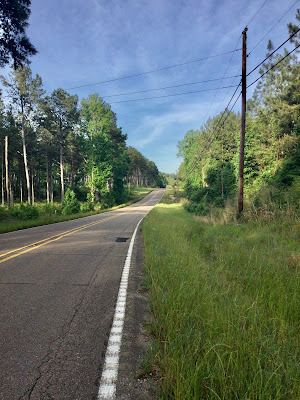If I were restricting my purchase of ice-filled self-serve drinks at service stations to only the 79 or 99 cent specials, as I’m able to do on some trips, I wouldn’t be drinking many such beverages, as those once common specials are virtually no more. Stores are no longer willing to entice customers with such bargains, or else they don’t need to with people seeming to be willing to pay anything for such drinks when the heat soars into the nineties. Some stores don’t even post the prices of their drinks knowing that people are willing to pay anything.
Early on I asked the cost of a 32-ouncer at one such mom-and-pop store that didn’t post their drink prices. The woman at the register said she didn’t know, she just pressed a key on the cash register for such drinks. I said I was hoping it might be 99 cents. She checked the price and said it was $1.39, but that I could have it for $1.09. I no longer ask. I just pay whatever they’re charging, as, when the heat is ovenish, price doesn’t matter. I sometimes just pay for a cup filled with ice, especially when one of the tap options is water that comes out ice cold.
Yesterday in the small town of Boston, I felt like I was going back in time when I saw a sign on a local service station/convenience store adverting “all fountain drinks 99 cents.” And it got even better when one of its selections was Gatorade. I drank some of the 32 ounces and then poured the rest into one of my insulated water bottles and headed over to the Carnegie Library where I planned to finish it off while I luxuriated in its air-conditioning and its centuries old ambiance.
Then it was east to Valdosta on a four-lane highway for thirty-five miles just north of the Florida border to the next Carnegie. I had to regularly dodge fragments of tires on the shoulder, each a flat-tire hazard from their tiny wire slivers that could be scattered far and wide. Such a sliver caused my flat four days ago and caused many many more during my time in Senegal and Mali. Blown tires were strewn everywhere there and their remnants were hard to avoid. Every tire fragment now triggers memories of that trip in sub-Sahara Africa. I don’t entirely mind, as other than the flats, the memories are something to savor, whether all the colorful fragments of fabric I gathered or the many friendly encounters I had with the locals or the pleasure of riding along the fringe of the Sahara.
Even though I have a new rear tire, it isn’t as heavy-duty as I’d prefer. The lone bike shop in Albany had no 700-28s. All it had were 35s, which was too wide, and 26s, a little narrow, but acceptable. It is a new size, a tad wider than 25, in response to the popularity of gravel bikes and their need to have a slightly wider tire than 25. If I had been obstinate about having a 28, it was sixty miles to the nearest bike shop, a sorry testament to the status of bicycles these days. It’d been thirty years, the shop owner said, since there’d been another bike shop in this city of 72,000, the eighth largest in the state.
It had long ago outgrown it’s Carnegie, which now serves as the quarters for the local art council. I’d actually visited it a year ago on my ride from Miami to New Orleans and was happy to see it again thanks to needing to come to Albany for its bike shop.
Now that I’m near the Florida border an RV passed me for the first time. I can’t say with certainty that it was the first, but it did make enough of an impression on me that I realized it could well have been the first, as my instant reaction to seeing it coming towards me was to look in its windshield to see if there was a Tour de France course marker perched on the dashboard, an indication that my subconscious has me in France, as that is how I have been conditioned to respond when I’m at The Tour, wondering if the RV, or “camper van,” as they are known in France, is a fellow Tour follower.
It is always a joy to behold a Tour marker, whether tied to a post indicating The Tour route or as a souvenir in the front or back window of a Tour follower. It had me smiling to have such memories stirred and made me wonder if such recollections of France are subtle urgings from The Tour to come on over. It starts in four weeks, a week earlier than usual to accommodate riders who wish to compete in the Olympics as well as The Tour. But France has not opened up to Americans just yet. That is supposed to happen June 9, but that is no certainty. With the three-week Giro (Tour of Italy) going on and wrapping up today, that too has been reminding me how nice it is to immerse one in a Grand Tour for three weeks.
The Carnegie in Moultrie, south of Albany, has been the lone one bereft of any Carnegie identity. It is now a law office. It bears a plaque identifying it as being on the National Registry of Historical Places, but did not state its heritage.









































